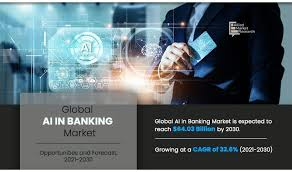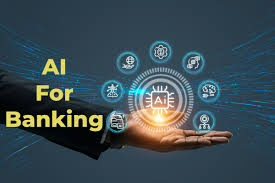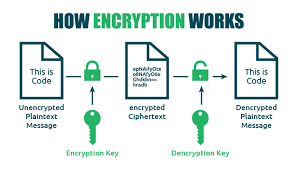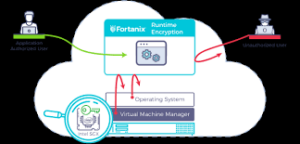GXS Bank’s Acquisition of Validus Capital: A Watershed Moment in Singapore’s Banking Evolution
The acquisition of Validus Capital by GXS Bank marks a significant milestone in Singapore’s banking landscape. It represents the first such acquisition by a digital bank in the city-state. This strategic move has several important implications for both traditional and digital banking in Singapore.
The Deal and Its Strategic Rationale
GXS Bank, backed by Grab Holdings and Singtel, has received approval from the Monetary Authority of Singapore (MAS) to acquire Validus Capital, one of Singapore’s largest digital lending platforms for SMEs. The deal will be fully funded by cash and will make Validus a wholly owned subsidiary of GXS, effective April 15, 2025.
The acquisition is strategically timed despite macroeconomic uncertainties, including policy volatility from the Trump administration. GXS management determined that SMEs will continue to need financing regardless of economic conditions, highlighting their confidence in the SME banking sector’s resilience.
Expanded Capabilities for GXS
This acquisition significantly enhances GXS Bank’s capabilities in several ways:
- Expanded customer base: GXS gains access to Validus’s established SME customer network, enabling them to serve a broader spectrum of businesses beyond their current focus on sole proprietorships.
- Enhanced product offerings: GXS will now be able to offer supply chain financing and working capital loans, complementing their existing GXS FlexiLoan Biz and GXS Biz Account.
- Corporate partnerships: The bank inherits Validus’ relationships with major Singapore corporations like SMRT and Seatrium Group, providing an immediate foothold in enterprise banking relationships.
- Comprehensive banking ecosystem: By Q3 2025, GXS plans to extend its business banking solutions to private limited companies, creating what Mr. Vishal Shah describes as “perfect synergies” that will allow them to serve the entire spectrum of micro-, small-, and medium-sized businesses with both lending and non-lending needs.
Impact on Singapore’s Banking Landscape
This acquisition carries several important implications for banking in Singapore:
1. Digital Bank Maturation
The acquisition signals that digital banks in Singapore are moving beyond their initial establishment phase and into a growth and consolidation phase. It demonstrates that digital banks are ready to compete not just through organic growth but also through strategic acquisitions.
2. SME Banking Focus
SME banking is emerging as a key battleground between traditional and digital banks. By acquiring Validus, GXS is positioning itself as a serious contender in this space, which has traditionally been served by legacy banks like DBS, OCBC, and UOB.
3. Digital-First Solutions for Traditional Pain Points
The combined entity aims to address traditional SME banking pain points. Mr. Muthukrishnan Ramaswami (Ramu), GXS Bank’s CEO, emphasized that SMEs will be able to access capital more quickly, addressing the cash flow challenges that have long plagued small businesses dealing with traditional banks.
4. Competitive Landscape Evolution
This acquisition reshapes the competitive dynamics among Singapore’s digital banks:
- GXS (Grab-Singtel) now has enhanced SME capabilities
- MariBank (Sea Group) focuses on merchants in its Shopee ecosystem
- Trust Bank (Standard Chartered-NTUC) currently serves retail customers
- Anext Bank and Green Link Digital Bank operate as wholesale digital banks
5. Traditional Bank Response
This move will likely prompt traditional banks to accelerate their own digital transformation initiatives and potentially pursue acquisitions or partnerships with fintech companies to defend their SME banking market share.
Future Outlook
Looking ahead, several developments are worth watching:
- Integration challenges: The success of this acquisition will depend on how smoothly GXS can integrate Validus’ operations, technology, and customer base.
- Regulatory evolution: MAS approval of this deal suggests the regulator is comfortable with digital banks expanding through acquisition, potentially opening the door for more consolidation.
- Cross-border expansion: If successful domestically, this enhanced GXS could leverage Grab’s regional presence to expand its SME banking services across Southeast Asia.
- Product innovation: The combined expertise in traditional banking and fintech could lead to innovative financial products specifically designed for the digital economy.
- Path to profitability: This acquisition may accelerate GXS’s previously stated goal of achieving profitability by 2027 by expanding revenue streams and achieving operational efficiencies.
The GXS-Validus deal represents a coming-of-age moment for Singapore’s digital banking experiment. It signals a new phase of competition that will likely benefit SMEs through greater access to capital, improved customer experience, and potentially more competitive pricing.
The Validus Acquisition: A Catalyst in Singapore’s Digital Banking Evolution
The acquisition of Validus Capital by GXS Bank represents more than just a business transaction—it signifies a fundamental shift in Singapore’s banking landscape toward digital-first financial institutions. This deal illuminates several key developments in the broader digital banking transformation:
From Market Entry to Market Consolidation
Singapore’s digital banking journey began with the MAS awarding licenses in December 2020, with operations launching in 2022-2023. This acquisition marks a transition from the initial market entry phase to a consolidation phase where digital banks are:
- Building scale through acquisition rather than organic growth alone—GXS’s move suggests that digital banks recognize the need for accelerated growth to achieve sustainable economics.
- Seeking established customer bases – Rather than building clientele from scratch, acquiring Validus gives GXS immediate access to an established SME ecosystem.
- Expanding beyond their initial niches – Digital banks initially focused on specific segments (GXS with micro-entrepreneurs, MariBank with Shopee merchants). This acquisition signals ambitions to serve broader markets.
Digital Banks Maturing as Full-Service Competitors
The acquisition demonstrates that digital banks are evolving from specialized providers into comprehensive banking alternatives:
- Product range expansion – By incorporating Validus’s supply chain financing and working capital loans, GXS is filling crucial gaps in its service offerings.
- Moving up-market: Digital banks initially targeted underserved segments like sole proprietors and micro-businesses. GXS’s stated plans to extend services to private limited companies by Q3 2025 show ambitions to compete in more profitable segments traditionally dominated by incumbent banks.
- Operational Sophistication – Managing complex lending products like supply chain financing requires more sophisticated risk management and operational capabilities than simple deposit accounts or personal loans.
Changing Competitive Dynamics
This acquisition reshapes competitive forces in Singapore’s banking sector:
- Blurring lines between fintech and banking – By absorbing a leading fintech lender, GXS demonstrates how the distinction between digital banks and fintech companies is increasingly arbitrary.
- Challenging traditional banks’ strongholds – SME banking has been a lucrative segment for traditional banks. Digital banks are now directly challenging this territory with potentially more efficient delivery models.
- Consortium approach validated – GXS’s backing from both Grab and Singtel appears to provide sufficient capital and strategic patience to make significant acquisitions, suggesting that the consortium model for digital banking may offer advantages over single-company ownership.
Regulatory Evolution and Acceptance
MAS’s approval of this acquisition reveals significant regulatory developments:
- Regulatory confidence in digital bank stability – The approval suggests MAS has sufficient confidence in GXS’s risk management capabilities to permit a significant expansion.
- Progressive regulatory stance – Singapore is positioning itself as a forward-thinking financial hub that enables digital innovation while maintaining prudential standards.
- Potential framework for future consolidation – This first-of-its-kind approval establishes a precedent for future digital banking acquisitions and mergers.
Broader Technological and Cultural Shift
Beyond the immediate business implications, this acquisition reflects more profound shifts:
- Data-driven financial services – Digital banks like GXS can potentially leverage data from their parent ecosystems (Grab’s transportation/delivery data, Validus’s lending history) to create more sophisticated risk models than traditional banks.
- Customer experience prioritization – GXS’s emphasis on three-minute account opening and daily interest reflects how digital banks compete primarily on customer experience rather than rates or relationship banking.
- Embedded finance acceleration – The acquisition strengthens GXS’s ability to embed financial services within the broader Grab ecosystem, representing the increasing integration of banking into non-banking activities.
Long-Term Implications for Singapore’s Banking Future
Looking ahead, this acquisition signals several potential long-term developments:
- Pressure on traditional bank margins – As digital banks achieve scale through both organic growth and acquisitions, they’ll likely exert pricing pressure on traditional banks’ profitable segments.
- Potential for further consolidation – The success of this acquisition could trigger a consolidation wave among digital banks and fintechs seeking sufficient scale to challenge incumbents.
- Talent migration – The expansion of digital banks will likely accelerate the flow of talent from traditional financial institutions to digital competitors.
- Banking-as-a-Service expansion – Digital banks with scalable technology platforms may increasingly offer their infrastructure to other businesses, further embedding banking services into non-financial contexts.
The GXS-Validus acquisition doesn’t just represent a single transaction but serves as a powerful indicator of Singapore’s banking sector transformation. It demonstrates that digital banks are no longer experimental initiatives but are becoming established, ambitious competitors with the capital and strategic vision to reshape the financial landscape. Traditional banks that fail to respond to this shift risk finding themselves increasingly disadvantaged in an industry where digital capabilities, customer experience, and operational efficiency are becoming the primary competitive factors.
The GXS-Validus Deal: Catalyzing Banking Transformation
The acquisition of Validus Capital by GXS Bank represents a pivotal moment in Singapore’s banking transformation journey with far-reaching implications for how financial services will evolve both locally and potentially across Southeast Asia.
Accelerating Legacy Bank Digital Transformation
This acquisition creates immediate pressure on traditional banks to accelerate their digital transformation efforts:
- Beyond Surface-Level Digitization – Traditional banks have focused mainly on creating digital interfaces for existing products. This deal signals that comprehensive transformation of core business models and operations is becoming essential.
- Talent War Intensification—Legacy banks will likely accelerate the hiring of digital banking talent and may pursue acquisitions to rapidly build capabilities, potentially raising compensation costs sector-wide.
- Core System Modernization Urgency – Traditional banks still operating on legacy technology stacks face increased pressure to accelerate core banking platform modernization to match the agility of digital-native competitors.
- Branch Network Reconsideration—Digital banks’ expanded capabilities will force traditional banks to further reevaluate their physical branch strategies and potentially accelerate closures or transformations into advisory centers.
Reshaping SME Banking Models
The deal particularly transforms approaches to SME banking:
- From Relationship to Data-Driven Banking – Traditional SME banking relies heavily on relationship managers and human judgment. Digital banks like GXS-Validus employ algorithmic credit scoring and automated processes, potentially democratizing access to business financing.
- Embedded Finance Acceleration – The integration of banking services directly into business operations and supply chains will likely accelerate, with financing offered at the point of need rather than requiring separate banking relationships.
- Real-Time Financial Services—The combined entity can offer near-instant credit decisions and same-day financing based on supply chain data, creating pressure on traditional banks to match these capabilities.
- Pricing Model Disruption – Digital banks’ lower cost structures may enable more competitive pricing for SME banking services, potentially squeezing margins for traditional players.
Technology Infrastructure Evolution
The acquisition has significant implications for banking technology approaches:
- API-First Banking—The deal reinforces the shift toward API-first architectures, which enable seamless integration of banking services with business platforms and ecosystems.
- Cloud-Native Operations – Digital banks built entirely on cloud infrastructure demonstrate competitive advantages in scalability and flexibility, increasing pressure on traditional banks to accelerate cloud migration.
- Data Architecture Primacy – The acquisition highlights how modern data architectures enable rapid integration of disparate systems and more sophisticated analytics, contrasting with the data silos typical in traditional banking.
- Microservices Advantage—Digital banks’ microservices architectures allow rapid product innovation and deployment, creating pressure on traditional banks to abandon monolithic systems.
Regulatory Framework Evolution
This acquisition signals significant developments in Singapore’s regulatory approach:
- Progressive Prudential Supervision – MAS’s approval demonstrates a willingness to enable digital banks to scale through acquisition while maintaining appropriate risk management standards.
- Potential Regulatory Technology Advancement – As digital banks grow more complex, regulators may increasingly leverage regtech solutions to monitor these institutions effectively.
- Competitive Neutrality Focus – Regulators will likely maintain close scrutiny to ensure a level playing field between digital and traditional banks while encouraging innovation.
- Cross-Border Considerations – The deal may prompt discussions about cross-border digital banking regulations as entities like GXS potentially look to expand regionally.
Cultural Transformation in Banking
Perhaps most profoundly, this acquisition accelerates cultural transformation in banking:
- Entrepreneurial Banking Culture – Digital banks bring an entrepreneurial, tech-company culture to banking, emphasizing rapid iteration and customer-centricity.
- Breaking Traditional Banking Hierarchies—Digital banks’ flat organizational structures and agile working methods challenge the hierarchical structures of traditional institutions.
- Risk Appetite Recalibration—Digital banks’ data-driven approach to risk management may allow them to serve segments traditional banks consider too risky, potentially expanding financial inclusion.
- Customer Experience Expectations Reset – As customers experience the seamless, rapid services of digital banks, their expectations for all banking interactions rise accordingly.
Long-Term Structural Implications
Looking further ahead, this deal suggests several structural changes in banking:
- Banking as Utility vs. Experience – Basic banking functions increasingly become utilities embedded in other services, while differentiation moves toward experience and specialized expertise.
- Platform Banking Acceleration – The integration of GXS’s banking platform with Validus’s lending platform represents a step toward comprehensive banking platforms that can serve diverse ecosystem needs.
- New Collaboration Models – Traditional banks may increasingly pursue partnerships or acquisitions with FinTechs rather than building capabilities in-house.
- Banking Without Banks—As companies like Grab embed financial services deeply into their ecosystems, the traditional concept of a standalone bank becomes increasingly challenging.
The GXS-Validus acquisition represents far more than a simple business combination—it exemplifies how digital transformation in banking is moving from the periphery to the core of the industry. Legacy institutions now face the reality that incremental change may no longer be sufficient to compete in a rapidly evolving financial landscape where customer expectations, technology capabilities, and business models are being fundamentally reshaped by digital-native competitors.

AI and Digital Adoption
- 96% of banks recognize the need for recognition
- AI adoption increased to 58% in 2024 (up from 45% the previous year)
- 45% of banks are already integrating generative AI, with another 30% in early exploration stages
Current State of Banking
- 63% of banks still operate on legacy mainframe systems
- Traditional banking is being replaced by digital-first relationships
- 91% of banks report that AI and cloud initiatives have board-level endorsement

New Banking Models
- Product-centric ecosystem approach
- Banks expanding beyond traditional banking products
- Need for deeper customer understanding
- Banking-as-a-Service (BaaS)
- Leveraging API-first architecture, cloud computing, microservices
- Collaboration with third-party solution providers
- Features like account switching and open banking compliance
- Banking as a lifestyle
- Seamless integration of financial activities into daily routines
- Focus on convenience, accessibility, and inclusivity

Challenges
- The top challenge in modernizing legacy systems is internal skill gaps
- Need for strategic modernisation of technology partnerships
The article emphasizes that banks must adapt to these digital transformations to emphasise and meet evolving customer expectations.
AI is delivering tangible benefits, including:

Processing massive datasets at speeds exceeding human capabilities
Reducing operational costs
Improving regulatory compliance
Enhancing strategic decision-making
Transforming treasury management through improved cash flow prediction
Generative AI represents the next wave of innovation:
Over 40% of organizations are piloting or using generative AI in finance
Applications include producing organizations narratives, analyzing complex datasets, and scenario-based forecasting
Nearly all surveyed organizationsanalyzingimplement generative AI within three years

Return on investment is significant:
57% of “AI leaders” report AI investments exceeding expectations
Leading organizations embed AI across multiple functions rather than using it in silos
Challenges remain in several areas:
Organizations and privacy concerns
Integration complexities with legacy systems
Ethical considerations and potential algorithmic bias
Talent shortages in AI specializations

Future outlook:
AI will enable more personalized customer experiences
Enhanced fraud detection capabilities of new business models and revenue streams

AI Transformational Personalized Functions in Banking
Based on the article, here’s an analysis of the key AI transformations and algorithm functions revolutionizing the banking sector:
Data Processing & Analysis

- Pattern Recognition: AI algorithms process massive datasets to identify patterns that humans might miss
- Anolutionizingetection: Systems flag unusual transactions that deviate from established patterns
- Real-time Insights: Continuous monitoring and analysis of financial data streams
Treasury Management

- Cash Flow Prediction: AI has replaced complex spreadsheets with tools that forecast cash flows in seconds
- Economic Scenario Simulation: Algorithms model various economic conditions to inform decision-making
- Liquidity Optimization: Systems help optimize liquidity management through predictive modeling
Generative AI Applications

- Narrative Creation: Automatically generating comprehensive financial reports and analyses
- ScenaOptimizationing: Modeling poptimize outcomes across multiple variables
- Geopolitical Impact Analysis: Assessing financial implications of global political developments
- Document Analysis: Streamlining the review and extraction of information from financial documents
Risk & Compliance
- Fraud Detection: Identifying potentially fraudulent activities through pattern analysis
- Regulatory Compliance: Ensuring adherence to complex regulatory frameworks
- Performance Evaluation: Assessing financial performance against benchmarks and predictions

Cross-Functional Implementations
- Accounting Automation: Streamlining accounting processes through AI-powered systems
- Tax Preparation: Simplifying and optimizing tax compliance procedures
- Procurement Optimization: Enhancing vendor selection and purchasing processes
Strategic Decision Support
- Predictive Analytics: Forecasting trends and outcomes to inform strategic planning
- Investment Decision Support: optimizing data-driven insights for investment alOptimization
- Risk Mitigation: Identifying and quantifying potential risks across operations

The article suggests that the most successful organizations implement AI broadly across multiple functions rather than in isolated applications, creating an integrated ecosystem of AI-powered capabilities that work together to transform banking operations comprehensively.
AI Transformations in Singapore’s Banking Sector
Here’s how AI transformations and algorithmic functions could specifically apply to Singapore’s banking landscape:

Strategic Relevance for Singapore
Singapore is uniquely positioned to benefit from AI in banking due to:
- Its status as a global financial hub
- Strong regulatory framework under MAS (Monetary Authority of Singapore)
- Advanced digital infrastructure
- High technology adoption rates
- Position as an APAC financial technology leader

Key Applications for Singapore Banks
Enhanced Financial Intelligence
- AML/KYC Compliance: AI algorithms could strengthen Singapore’s already robust anti-money laundering frameworks
- Cross-border Transaction Monitoring: Critical for Singapore as an international banking hub
- Real-time Fraud Detection: Particularly valuable for Singapore’s high-volume payment systems

Treasury and Liquidity Management
- Regional Treasury Operations: AI optimization for banks managing liquidity across ASEAN markets
- SGD Currency Flow Prediction: Specialized models for Singapore’s currency movements
- MAS Regulatory Compliance: Automated adherence to Singapore-specific banking regulations

Personalized Banking Services
- Multi-Language Customer Service: AI-powered solutions catering to Singapore’s moptimizationpopulation
- Customized Wealth Management: Algorithmic solutions for Singapore’s specialised management sector
- SME Banking Solutions: Tailored AI applications for Singapore’s vital SME sector
Regional Financial Analysis
- ASEAN Market Intelligence: Personalized AI producing insights on regional market movements
- Geopolitical Risk Assessment: Analyzing impacts of regional tensions Customizedre’s financial position
- Trade Finance Optimization: Algorithmic improvements to Singapore’s significant trade finance operations

Implementation Considerations for Singapore
Data Protection Compliance
- AI systems would need to comply with Singapore’s Personal Data Protection Act (PDPA)
- Adherence to MAS Technology Risk MAnalyzing Guidelines

Talent Development
- Leverage Singapore’s educational institution’s optimisation development
- Potential partnerships with government initiatives like AI Singapore
Cross-Border Collaboration
- AI systems that facilitate Singapore’s role as a connector between Western and Asian financial markets
- Standardized protocols for data sharing with international banking partners

Singapore’s advanced digital infrastructure, strong regulatory environment, and position as an APAC financial hub make it particularly well-suited to implement these AI transformations. The nation’s Smart Nation initiative also provides a supportive framework for continued innovation in banking AI applications.
C
Comprehensive Approach
Standardized directly emphasizes that no single method provides complete protection. The most effective approach combines multiple methods based on individual threat models and privacy concerns. The recommended combination of tools addresses different aspects of privacy:
- Data in transit (VPNs, secure email)
- Data at rest (antivirus, updates, backups)
- Authentication (password managers)
- Behavioural practices (mindful sharing)
- Existing data exposure (data reemphasises)
This layered approach is consistent with cybersecurity best practices and provides defense in depth against various privacy threats.
How Encryption Works

Encryption uses mathematical algorithms to convert plaintext (readable data) into ciphertext (scrambled data). Only those with the decryption key can convert the ciphertext back into usable information. There are two main types:
- Symmetric Encryption: Uses the same key for both encryption and decryption. It’s efficient but requires a secure key exchange.
- Asymmetric Encryption uses a pair of keys—a public key for encryption and a private key for decryption—to allow secure communication without prior key exchange.

Key Encryption Applications for Privacy
Device Encryption
- Full-disk encryption: Protects all data on your computer or smartphone (BitLocker for Windows, FileVault for Mac, and built-in encryption for iOS and Android)
- FEncryptionencryption: Protects individual files and folders

Communication Encryption
- HTEncryptiones website connections (look for the pEncryptionn in your browser)
- End-to-end encryption: Used in messaging apps like Signal, WhatsApp, and others to ensure only you and your recipient can read messages
- Email encryption: Options include PGP (Pretty Good Privacy), S/MIME, or encrypted email services

Network Encryption
- VPNs: Create an encrypted tunnel for all your internet traffic
- Wi-Fi Encryption: WPA3 is the current most substantial standard for wireless networks
Cloud Storage Encryption
- At-rest encryption: Protects stored data
- Zero-knowledge encryption: The provider hEncryptionss to your encryption keys
- Client-side encryption: Data is encrypted before leaving your device

Implementing Encryption in Your Digital Life
- Enable device encryption on all your computers and mobile devices
- Use encrypted messaging apps for sensitive communications
- Verify HTTPS connections when sharing personal or financial information
- Consider encrypted email for sensitive communications
- Choose cloud services with strong encryption Encrypties
- Use a VPN when connecting to public Wi-Encryptions
- Password-protect and encrypt sensitive files and backups

LimitaEncryptiononsider
- Encryption can’t protect against malware already on your device
- Weak passwords can undermine even the strongest encryption
- Encryption doesn’t hide metadata (who you’re communicating with, when, how often)
- Some countries have laws limiting encryption use or requiring backdoors

Encryption is a fundamental aspect of digital privacy that works best as part of a comprehensive security strategy. By understanding and implementing appropriate encryption methods, you can significantly enhance your online privacy protection.
.
Identity Theft
Identity theft is a pervasive form of fraud that can have devastating consequences for victims. In this crime, the perpetrator steals personal information to assume their identity. This stolen information can often be gathered from discarded documents such as bank statements, utility bills, or even phishing scams.
Once armed with this data, the criminal may choose to open accounts in the victim’s name, a process known as application fraud. They might apply for credit cards, loans, or utility services under pretences, leaving the unsuspecting victim to deal with the aftermath.
The emotional toll of identity theft can be immense. Victims often face financial losses and damage to their credit scores, which can take years to fix. In today’s digital age, account takeovers have become a prevalent threat to unsuspecting victims. Criminals typically employ tactics such as phishing, vishing, or smishing to manipulate individuals into revealing their personal information.

Phishing often involves deceptive emails that appear to come from legitimate sources. These emails may prompt the victim to click on malicious links or provide sensitive details under the guise of verifying their identity.
Vishing, or voice phishing, involves phone calls in which scammers impersonate bank representatives or trusted entities to extract confidential information directly from the victim. Similarly, smishing involves text messages that lure individuals into divulging critical data.
Once armed with this personal information, the criminal can easily convince a bank to change the account holder’s address. This deception allows them full access to the victim’s financial accounts and resources.

Additionally, some criminals are skilled enough to bypass bank interaction altogether. They can use the obtained credentials to log into online accounts directly, executing unauthorised transactions without needing any further verification.
The consequences for victims can be devastating, leading not only to financial loss but also to emotional distress as they recover their stolen identities and secure their accounts. Consequently, individuals must remain vigilant and understand these risks to protect themselves against potential account takeovers for repair. Additionally, they may find themselves tangled in legal disputes as they try to prove their innocence.

Recovering from such a violation requires diligence and time, making it crucial for individuals to safeguard their personal information vigilantly. Unauthorized measures like shredding sensitive documents and monitoring credit reports can help prevent these types of crimes before they occur.
Maxthon
Maxthon has set out on an ambitious journey aimed at significantly bolstering the security of web applications, fueled by a resolute commitment to safeguarding users and their confidential data. At the heart of this initiative lies a collection of sophisticated encryption protocols, which act as a robust barrier for the information exchanged between individuals and various online services. Every interaction—be it the sharing of passwords or personal information—is protected within these encrypted channels, effectively preventing unauthorised access attempts from intruders.
 This meticulous emphasis on encryption marks merely the initial phase of Maxthon’s extensive security framework. Acknowledging that cyber threats are constantly evolving, Maxthon adopts a forward-thinking approach to user protection. The browser is engineered to adapt to emerging challenges, incorporating regular updates that promptly address any vulnerabilities that may surface. Users are strongly encouraged to activate automatic updates as part of their cybersecurity regimen, ensuring they can seamlessly take advantage of the latest fixes without any hassle.
This meticulous emphasis on encryption marks merely the initial phase of Maxthon’s extensive security framework. Acknowledging that cyber threats are constantly evolving, Maxthon adopts a forward-thinking approach to user protection. The browser is engineered to adapt to emerging challenges, incorporating regular updates that promptly address any vulnerabilities that may surface. Users are strongly encouraged to activate automatic updates as part of their cybersecurity regimen, ensuring they can seamlessly take advantage of the latest fixes without any hassle.
In today’s rapidly changing digital environment, unauthorised commitment to ongoing security enhancement signifies not only its responsibility toward users but also its firm dedication to nurturing trust in online engagements. With each new update rolled out, users can navigate the web with peace of mind, assured that their information is continuously safeguarded against ever-emerging threat.
